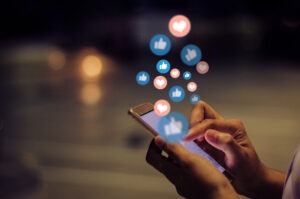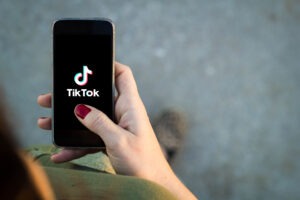De-Influencing Public Relations

Published on March 23, 2023, at 3:28 p.m.
by Helen Carson.
More than the glitz and glamour of events, writing press releases, and all the networking in between, the core body of public relations is focused on two things — credibility and storytelling.
Public relations is a popular and evolving industry: artificial intelligence, influencers, social media and the list goes on. But do people really know all that the industry entails and where it’s going? Social media users might not always understand the true meaning of PR, as there is more to the industry than just PR packages. Karla Gower, director of The Plank Center for Leadership in Public Relations, emphasized that “PR is still about relationships and people, and we can’t forget that. We can use it as a tool but can’t forget who we are as professionals.”
The textbook definition of public relations is an individual or organization strategically communicating with their key publics in order to build mutually beneficial relationships with those publics. Public relations is not simply publicity, which pushes out information to the target public. PR is both internal and external, two-way communication that cultivates relationships with key publics based on dialogue with them.

Shared media can be used by PR practitioners to add two-way communication with a target public through platforms like social media. Andrew Felts, a public relations specialist at Peritus, shared his insight on the differences between social media and PR, saying “it boils down to credibility.” Felts noted that PR and social media are “both tactics of storytelling but it’s how you are achieving that story” that truly defines the difference. “Social media, as a person or brand, can own its own story, whereas media relations and PR is about proving your credibility and someone else telling your story,” Felts added.
Although two different entities, social media and PR still work together.
Social media has altered the communications industry personally and professionally while also leading to a new career opportunity — influencers. An influencer is essentially a public leader for a brand, company or other entity, whether personal or professional.
Alice Helms, former influencer marketing specialist and now PR specialist at The Bliss Group, highlighted the difference in media types for influencers and PR, explaining that PR is based on earned media through credibility and storytelling, whereas influencers are essentially paid or owned media depending on the type of content creation.
Helms said that an influencer from a PR standpoint can be defined as “anyone who has an impact on someone’s life,” but now with the introduction of apps such as TikTok, the term has become a job title.

Helms used Kim Kardashian and Goldman Sachs as examples, two opposite ends of the spectrum, to show how both could be defined as influencers for having an impact on their respective industries, yet that is not the title used to describe the celebrity or company. Helms added that the term “influencer” may have gained a negative connotation from its over-usage and has “shifted into a term that PR does not recognize.”
A career path initially used to promote products, brands or any other entity, influencing has taken a turn toward what is called “de-influencing.” Essentially, de-influencing is influencers using their platforms to guide followers against products, brands or companies that they did not like or enjoy.
As stated in a newsletter article by Methods + Mastery, a FleishmanHillard agency, “de-influencing is about Gen Z rejecting being constantly marketed to and embracing things they already own, to protect their money and live more sustainably.” Methods + Mastery noted that a catalyst to this trend began with a rising distrust in beauty influencers. Generation Z creators have started calling out inauthentic influencers regarding their content and product reviews. This trend then snowballed into other industries and began taking on different forms. De-influencing has introduced the idea of pushing back against popular trends and influencer culture.
Yet, de-influencing may just end up as another form of influencing. Creators are still influencing by encouraging an audience to buy something other than the most popular product. Helms said the term “de-influencing” has become an oxymoron, as de-influencing still has the impact of influencing peoples’ lives.

As Pushkin PR insightfully noted, “While paid social media campaigns can be used to display content to a target audience, social media consumers make the decision to continually see content.” PR strategies “are focused on reaching the consumer where they are already actively consuming media,” the Pushkin PR post concluded.
An Instagram story, a TikTok video or a press release distributed through a tweet can all show the value of handling public relations through social media, but that does not mean social media and PR are the same. Social media can grant “instant satisfaction” and credibility through likes, reposts and comments instantly from a post, Felts explained, but PR is about gaining and establishing credibility through “a longer lead” than one post. Ultimately, Gower said, PR is still about “preventing problems in communication” while helping people to connect with organizations in meaningful ways.




